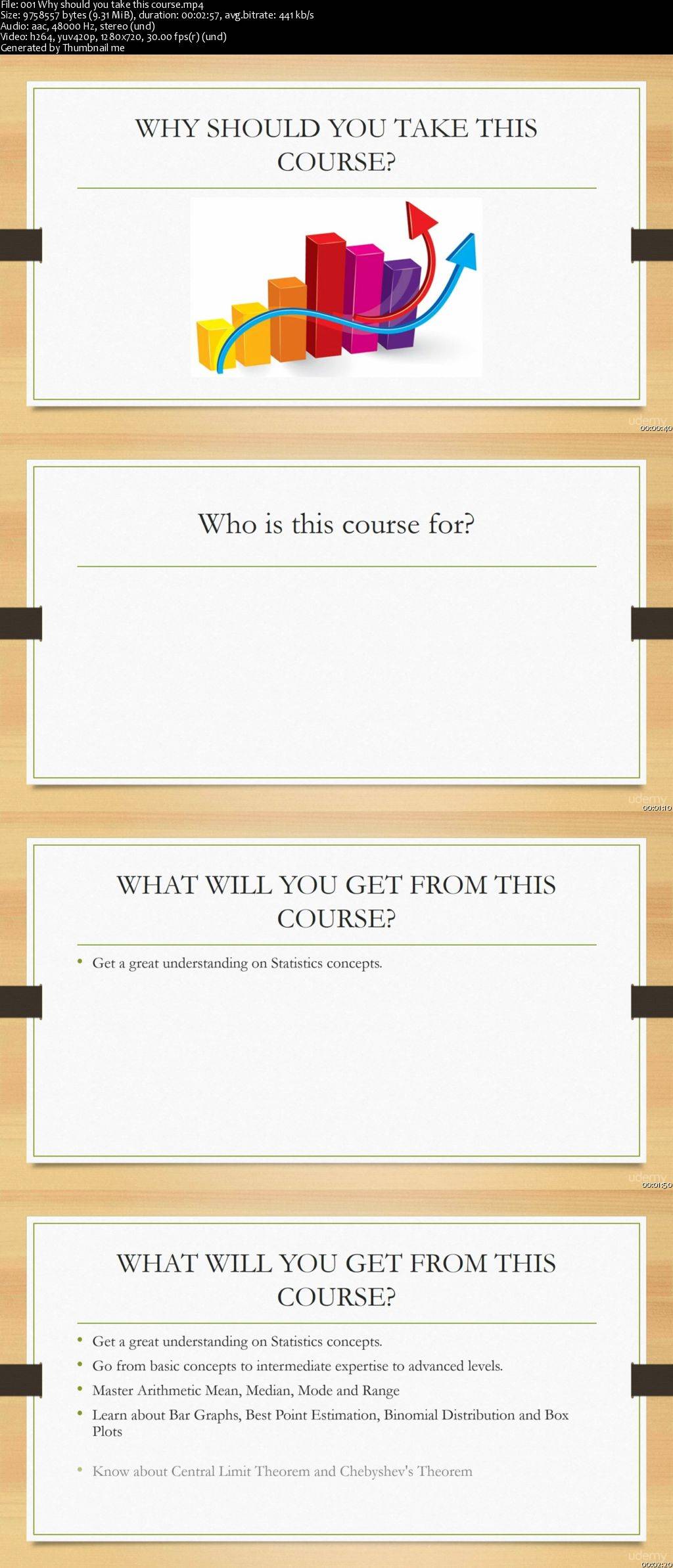Learn Statistics for Beginners
MP4 | Video: AVC 1280x720 | Audio: AAC 44KHz 2ch | Duration: 1 Hour | Lec: 10 | 114 MB
Genre: eLearning | Language: English
MP4 | Video: AVC 1280x720 | Audio: AAC 44KHz 2ch | Duration: 1 Hour | Lec: 10 | 114 MB
Genre: eLearning | Language: English
Enhance your Statistics knowlege thoroughly
Welcome to the course on Statistics . This course includes topics on Unbiased Estimates and Efficient Estimates, Point Estimates and Interval Estimates, Reliability, Confidence Interval Estimates of Population Parameters, Confidence Intervals for Means, Confidence Intervals for Proportions, Confidence Intervals for Differences and Sums, Confidence Intervals for the Variance of a Normal Distribution, Confidence Intervals for Variance Ratios and Maximum Likelihood Estimates.
Usually, estimates serve to compress information. Their job is to extract from a large set of data the pertinent pieces of information required to make a good decision. For example, the receiving circuitry of a radar gathers a very large amount of information about what objects are around it, but in a form which is too difficult for humans to process manually. The familiar graphical display produced by a radar results from processing the received signal and extracting out the features we are interested in. Even in estimating the height of a tree, this is true. The full information is the complete sequence of images our eyes see as we look up at the tree; we compress this information into a single number (we hope is) related to the height of the tree.
Initially then, there is no role for estimation theory. We have data (also commonly referred to as observations) and we wish to make an informed decision. A standard and widely applicable framework for making decisions is to determine first how to measure the goodness of a decision and then endeavour to construct a decision rule (which takes as input the available data and outputs the recommended decision to make) which can be shown, in a probabilistic framework, to make good decisions the majority of the time. A key point is that theoretically, we should use all the data available to us if we wish to make the best decision possible. (Old habits die hard. It is tempting to reason thus: If I knew what the temperature will be tomorrow then I know what clothes to pack, therefore, I will base my decision on my “best guess” of tomorrow’s temperature. This is not only sub-optimal, it is also ill-posed because the only way to define what a “best guess” is, is by starting with the decision problem and working backwards.)





